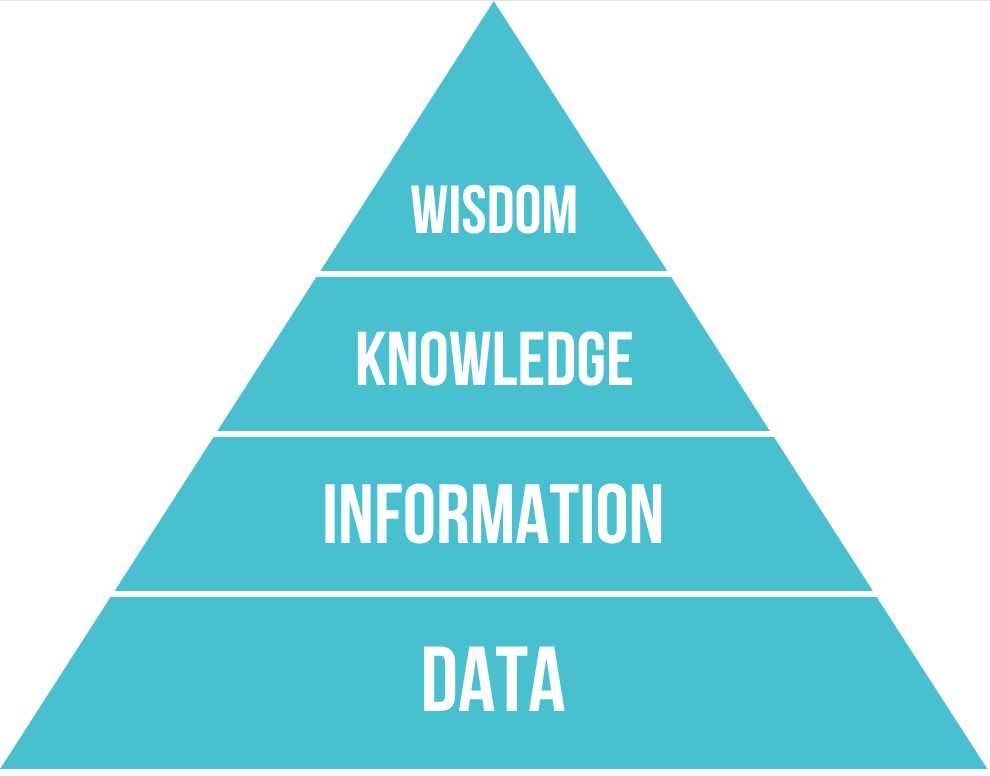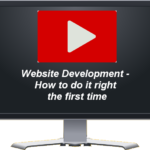When it comes to business—and really, life in general—the journey toward true understanding can be visualized as climbing a pyramid: starting at the wide base with Data, moving upward through Information and Knowledge, and finally reaching the pinnacle of Wisdom. This is known as the DIKW pyramid. Recognizing where you are on this pyramid can make a world of difference when making smart, strategic decisions.
Let’s walk through it together.

Data is the base of the pyramid. It’s raw, unorganized, and unfiltered facts. Alone, it tells you almost nothing. Imagine someone says “Men” or “47 years old.” Those are simply isolated pieces of data. Without any context, it’s unclear what they mean or how you should respond. It’s like holding loose stones at the foot of a pyramid without any idea how they fit into the structure.
Information is the next level up. This is where you begin connecting pieces of data. Saying “47-year-old men” links two pieces of data into a more meaningful form. Information gives structure to the data—it’s like assembling the stones into a foundation. You start to recognize patterns and connections, which provide a sturdier platform for building your understanding.
Knowledge brings context and interpretation to the information you’ve gathered. When you realize that “At 47 years old, men reach their peak spending year,” you’ve elevated simple information into knowledge. Now you’re climbing higher up the pyramid. Knowledge tells you not just what the facts are, but what they mean in a given situation.
Wisdom is the apex—the very top of the pyramid. Wisdom is the ability to apply your knowledge effectively in new and dynamic situations. Knowing that 47-year-old men are big spenders, you might conclude that marketing luxury motorcycles to this demographic could be highly profitable. Wisdom transforms theoretical understanding into practical action.

When navigating a business situation, always ask yourself:
- Am I standing on raw data at the bottom?
- Am I moving up by linking data into information?
- Have I reached a level where I truly understand the context through knowledge?
- And most critically, am I applying that knowledge wisely at the top of the pyramid?
Here’s a practical example:
Suppose you run a specialty coffee shop. You collect data: sales are down in the afternoons. You organize it into information: sales between 2–5 PM have dropped 15% over the last quarter. You create knowledge by investigating why—perhaps nearby offices have adopted hybrid work models, cutting down foot traffic. Finally, you apply wisdom by launching a “Remote Worker Happy Hour” to attract a new afternoon crowd.
By seeing your situation through the lens of the Understanding Pyramid, you can better assess problems, seize opportunities, and create strategies that actually work.
The key? Don’t stop at the base. Keep climbing until you reach the wisdom at the top—and then put it into action.
Related Post: What You Need to Know About Hierarchical Decision-Making
Let’s take an example. Suppose you run a specialty coffee shop. You’ve collected data: sales are down. You turn it into information: sales between 2 and 5 PM have dropped 15% over the past quarter. You gain knowledge by discovering that many nearby offices switched to hybrid schedules, reducing foot traffic. Then you apply wisdom by launching a targeted “Afternoon Happy Hour” with discounts and promotions tailored to the remote worker crowd.
How can you apply the understanding pyramid to a current business situation you’re facing today?












